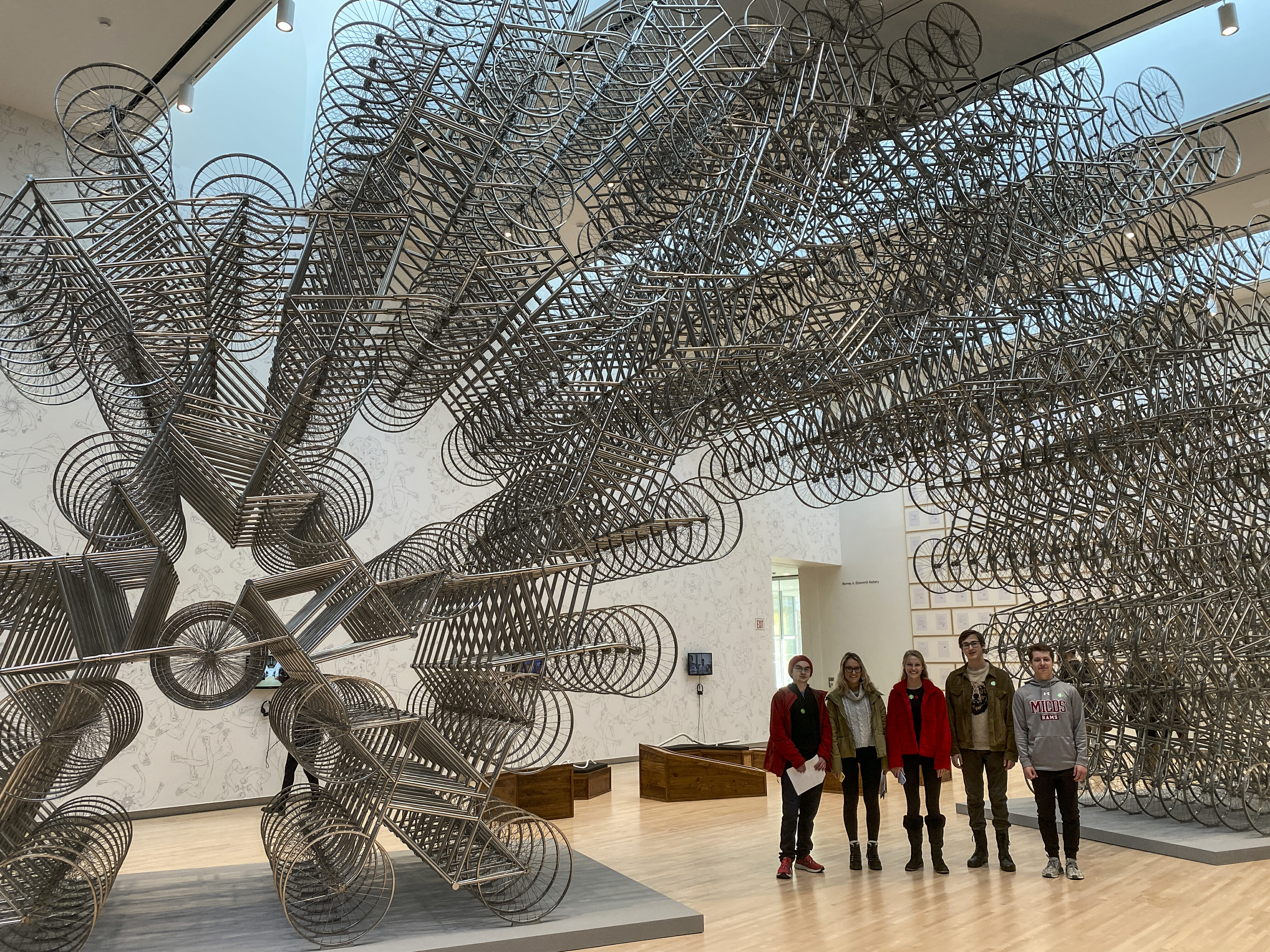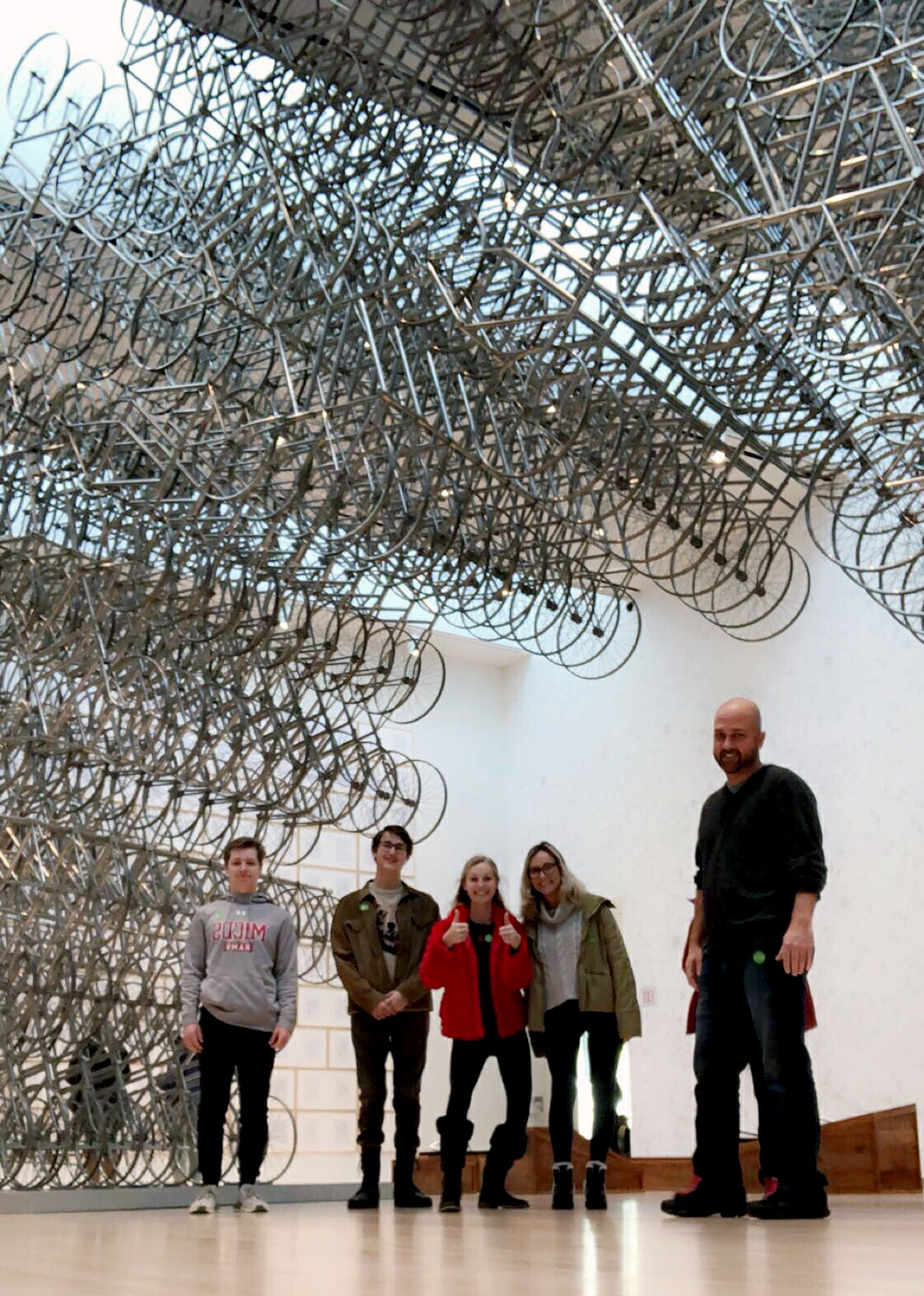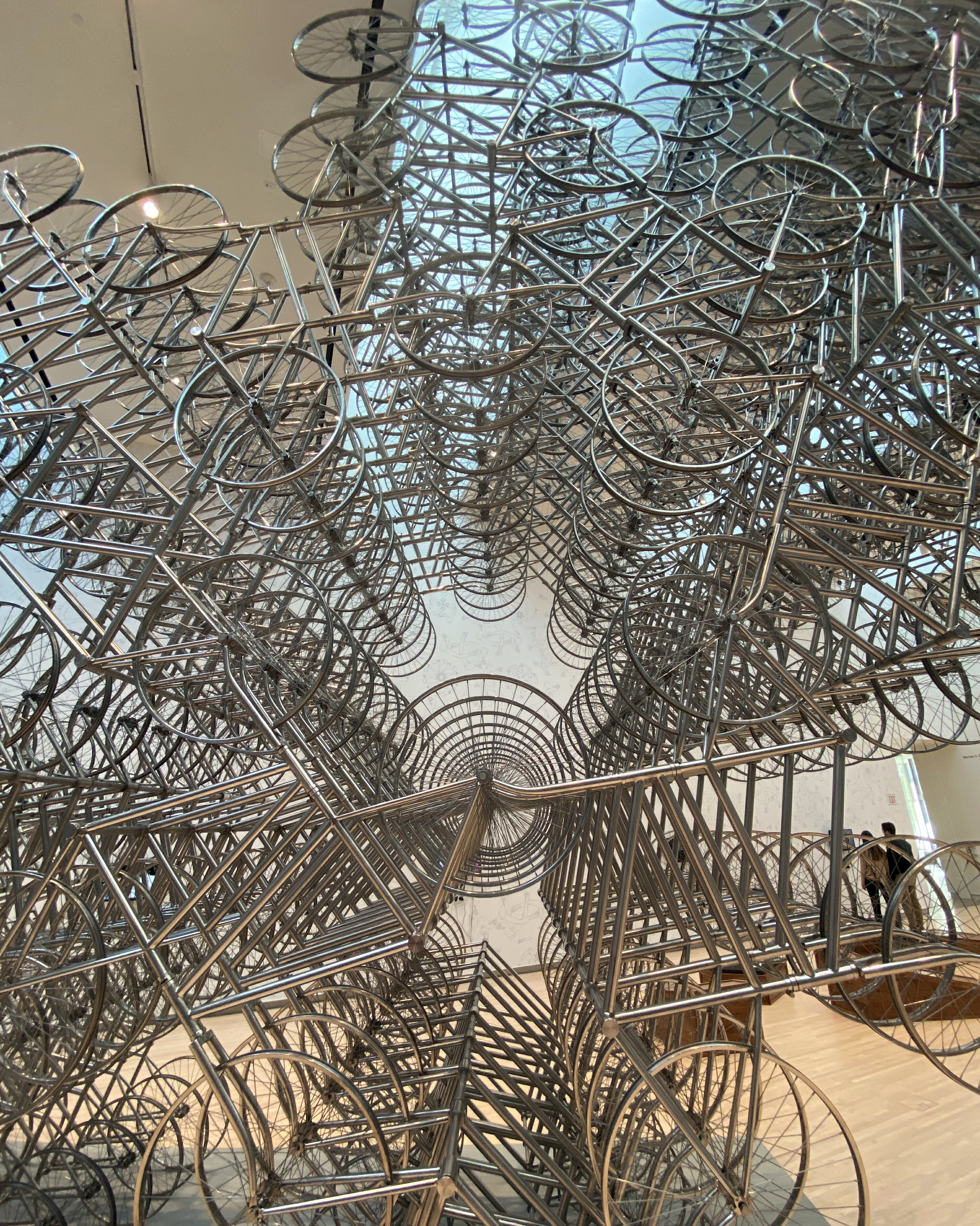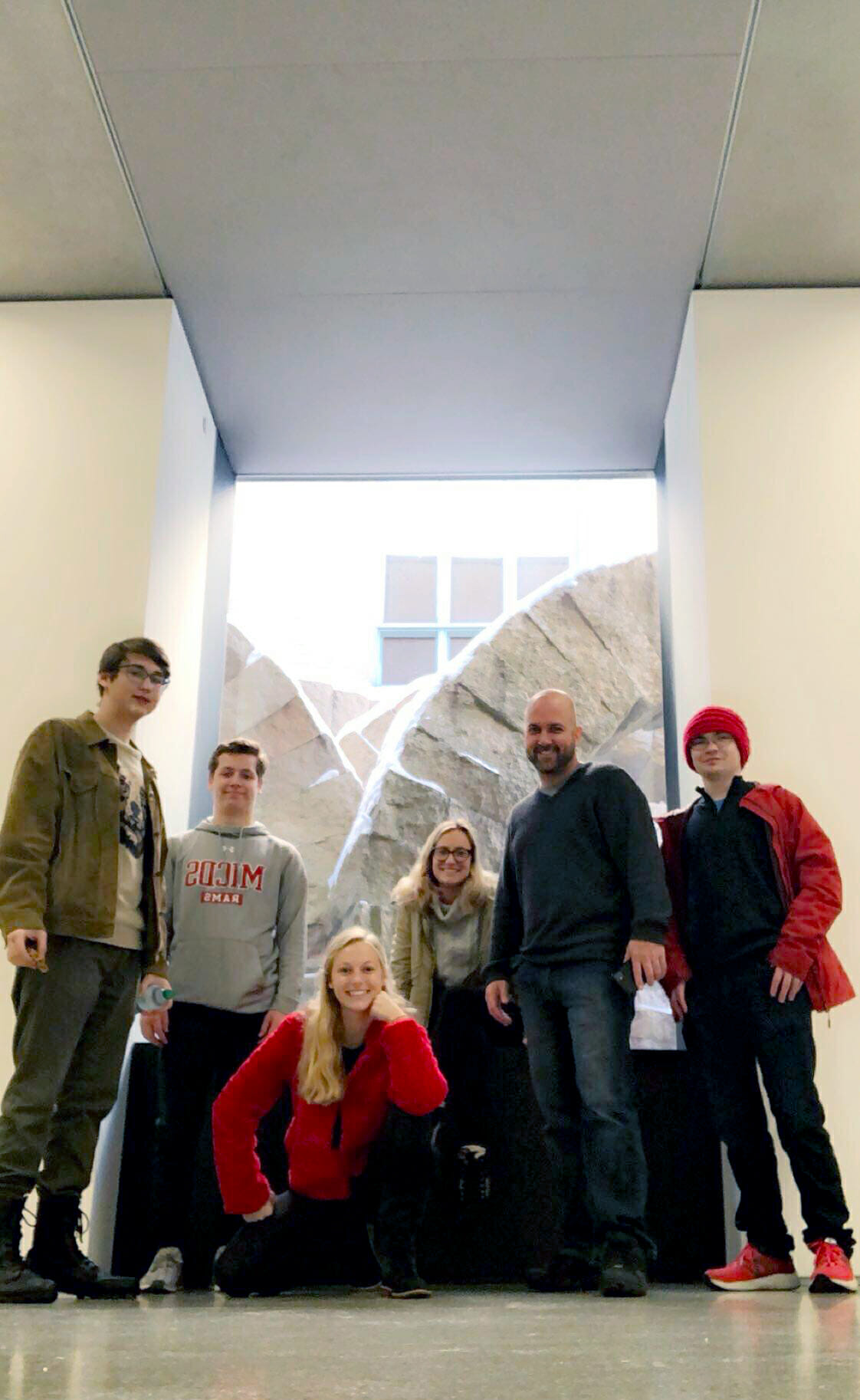Right before Winter Break, Sculpture III and AP 3-D Design students visited the St. Louis Art Museum (SLAM) to view sculpture, stopping first at the Andy Goldsworthy installation. They examined many sculptures there before making their way to The Mildred Lane Kemper Museum at Washington University.
At the Kemper, they viewed an Ai Weiwei exhibit which was the main inspiration for the trip. « Ai Weiwei is one of the leading sculptors in the world today, and St. Louis is very fortunate to have his work displayed here, » shares Upper School Fine & Performing Arts Department Chair Brad Heinemann. This exhibit coincided with the new opening of the museum as shared in this Forbes article. Read this St. Louis Public Radio article about how Artist Ai Weiwei Fuses Art And Activism In Show At St. Louis’ Kemper Museum.
Here’s an excerpt from the Educator’s Guide to learn more about the Weiwei and the exhibition:
Ai Weiwei, born in Beijing in 1957, is one of the world’s most renowned contemporary artists and activists. He spent most of the 1980s and early 1990s in the United States, exploring artistic practices in conceptual art and photography and addressing social issues that have remained central to his art throughout the years. Upon his return to China in 1993, Ai dedicated himself to building art communities. He gained increasing recognition as he participated in the design of the “Bird’s Nest” stadium for the Beijing Summer Olympics and won the Chinese Contemporary Art Award for Lifetime Achievement in 2008. That same year Ai emerged as an outspoken human rights activist and a prominent government critic, conducting investigations of the corruption scandal following the massive 2008 Sichuan earthquake. He was arrested by the government in 2010 and 2011 and remained under surveillance at an undisclosed location until 2015. He now lives and works in exile in Berlin and Cambridge.
Ai Weiwei: Bare Life brings together a broad selection of sculptures, installations, photographs, and videos, including some of Ai’s most iconic works created over the last two decades. Some newly conceived large-scale and site-specific projects are exhibited in the US for the first time. The exhibition is divided into two sections, “Bare Life” and “Rupture.” The themes and aesthetic forms of the artworks on view are deeply connected to the artist’s concern for universal human rights and his exploration of Chinese culture, past and present.




